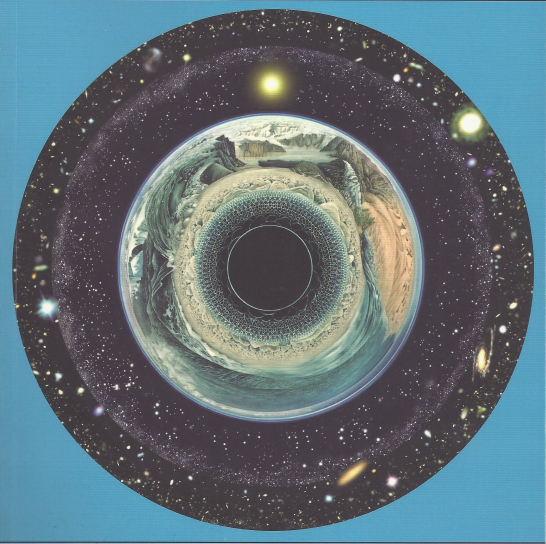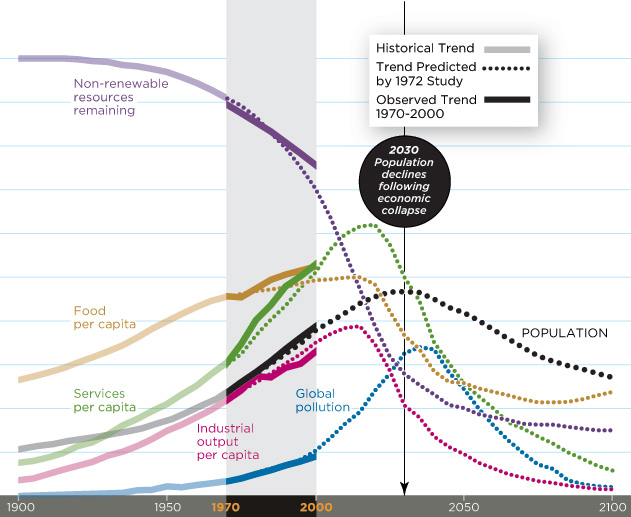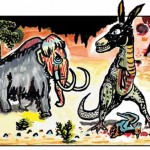
LATEST UPDATE
In honor of Earth Day, the statement has been published at ecopagan.com where you can add your signature. The statement represents the beginning of a conversation, not the final word. Join us in our call to all people to rise to this historic moment in order to protect all life on Earth by signing the statement. You can sign on your on behalf or on behalf of a group or organization.
UPDATE
I am very pleased to announce that the DRAFT Pagan Community Statement on the Environment is available for a period of public comment. The public comment period will be open until April 21, 2015. Share your comments at ecopagan.com.
The Statement will be published in its final form on Earth Day, April 22, 2015, when it will be made available for electronic signature. The Statement only represents you if you sign it. Please wait until April 22 to add your signature.
A lot of hard work has gone into the draft Statement over the past 6 months. It has been an honor to work with everyone who participated in the process, many of whom have been working for reform of our relationship to the environment for longer than I have been a Pagan. If you would like to know more about the working group that drafted this statement or our process, click here.
A week ago, the Covenant of the Goddess adopted a formal position on environmental issues. It’s an excellent statement, both poetic and practical. I have republished it below for your reading. The statement was proposed and developed by M. Macha NightMare, who has every reason to be proud of this accomplishment.
But what strikes me most about this statement is its tardiness. It is 2014. 2014! The Covenant of the Goddess was founded almost 40 years ago. And the publication of this statement tends to highlight its previous absence.
Neo-Paganism’s Promise
I don’t mean to single out the CoG. Neo-Paganism has been around for even longer — 47 years if you date it to the founding of Feraferia, the Church of all Worlds, and NROOGD. Back then, Neo-Paganism showed real potential as a new “Earth religion”. Feraferia and the Church of All Worlds in particular styled themselves as nature religions, with ambitious goals short of nothing but saving the world from itself. In 1970, the same year as the first Earth Day was celebrated, the founder of the Church of All Worlds, then Tim Zell, had a vision of Mother Earth as a living planet several years before James Lovelock’s Gaia Hypothesis was popularized, a vision which the CAW membership application required dedication to:
“In dedication to the celebration of life in its many forms, I hereby declare my commitment to a way of life that is ethical, benevolent, humanistic, life-affirming, ecstatic and ecologically sane. I subscribe to means and methods that are creative rather than destructive, tolerant rather than authoritarian, gentle rather than violent, inclusive rather than exclusive. I pledge myself to harmonious eco-psychic awareness with the total biosphere of holy Mother Earth.”
Neo-Paganism has always existed at the intersection of an esoteric Self-centricity and an exoteric Earth-centeredness, but Zell and others, like Morgan McFarland and Penny Novack, helped push Neo-Paganism in the direction of truly deserving the name “nature religion”. In the first edition of Drawing Down the Moon in 1979, Margot Adler documented a worrying lack of political will among Neo-Pagans. But by the time of the revised and expanded edition in 1986, Adler reported that things had shifted and Neo-Pagans had found a will to effect change. A large part of this shift has to be credited to Starhawk, who consistently and vocally argued that magic without action is no magic at all. Starhawk taught us that it is not enough to believe the Earth is a living being, we have to act like it.
A Promise Unfulfilled
So where are we today? John Beckett has recently reported on a study by Dr. Kimberly Kirner, which raised troubling questions about the depth of Neo-Pagan commitment to our vision of a living planet:
“While practices related to nature spirituality and connecting to place were statistically correlated to a higher frequency of political action (such as signing petitions or writing letters) and environmental education, initial statistical analysis has not indicated any correlation to household-level actions for sustainability itself (such selecting a smaller home or using less electricity).
“Across Pagan traditions and for both solitary and group practitioners, Pagans’ overall household ecological footprint in the United States is statistically similar to the American average on multiple measurements: house size, meat consumption, transportation use, and other key factors related to a household’s contribution to ecological sustainability.”
Not only have we failed to convince the rest of the planet, but it would seem that we failed to even convince ourselves.
As I see it, Neo-Paganism has struggled throughout its history to reconcile its exoteric earth-centered principles with the esoteric Self-centered practices which it inherited from Wicca — which did not itself begin as a nature religion and only became one to the extent it merged with Neo-Paganism under the influence of ecofeminism in the 1970s. This is reflected in how many of us, living in climates vastly different from Britain, still follow a Wheel of the Year derived from there. Our Wheel, as Joanne Pearson has said, has been turning the seasons, rather than the other way around. It is reflected in many of our invocations of the elements, which sound more like Neo-Platonic essences than the very real ground beneath our feet, air in our lungs, and water flowing though our bodies. Like Emerson, our “Nature” often seems to be more of a social construction than a direct experience, a romanticized or idealized nature that merely reflects our fantasies back to us, or a mere backdrop to our esoteric rituals. Many of us seem to be, in the words of Steven Posch, “standing with our backs to the world” — both literally and figuratively. We worship gods of nature, but not the God(dess) that is nature? And our “magic”, rather than being an expression of wonder, often seems to be just another attempt to achieve mastery over the natural world. As Peg Aloi has recently written:
“There are now hundreds of thousands of people who identify as ‘pagan’ or ‘Wiccan’ or ‘Druid’ or what have you who have never conducted a ritual out of doors, who have never attended a festival at a campground, who have never planted a garden in honor of the Eternal Return of the Earth Mother in spring. Do they discuss the gods and their ritual practices and spells and theology? Sure! But do they get their hands dirty, in actual dirt?”
But most of all, the conflict is reflected in the hypocrisy documented by Dr. Kirner above. (And I include myself in this indictment.)

Where the Rubber Meets the Road
I am still glad that CoG has published its position statement. Better late than never. And I don’t want to downplay the important work that many Pagans have done and continue to do, from Starhawk to some of the very people who blog here at Patheos. But we as a community are shamefully behind the times.
It was 1986 when the World Wildlife Fund brought together Buddhist, Christian, Hindu, Jewish and Islamic leaders in the Italian town of Assisi (chosen for its association with St Francis of Assisi, the Catholic “saint of ecology”) to produce declarations to their respective faithful that they live up to their sacred duty to nature. Did you know there is a “Muslim Seven Year Action Plan on Climate Change”? By 1995, Baha’i, Daoists, Jains and Sikhs had joined, and the Alliance of Religions and Conservation was created. Even the Zoroastrians have joined. No disrespect intended, but that’s one religion that may have even fewer members than Pagans.
Of course, the Neo-Pagans were not invited. But still, where was our declaration? Where is our action plan? We’re too busy scattering the proverbial cats to notice that the ale for our “Cakes and Ale” is in styrofoam cups. In 1986, Isaac Bonewits told Margot Adler that, while many Neo-Pagans were very concerned about environmental matters, “Most Neo-Pagans are too loose and liberal to be fanatic about anything, including their own survival.” Little seems to have changed. I imagine the reason we haven’t produced a community statement on the environment is because too many of us would scream, “Who are you to speak for me?” or even “The environment isn’t sacred to me!” (According to Brendan Myers, similar objections were raised to the Pagan Community Statement on Sexual Abuse.) If we can’t bring ourselves as a community to oppose the wholesale destruction of everything that makes this planet habitable to human beings, I wonder by what right we call ourselves “Pagan”, the “people of the land”.
Today I feel like we suck.
But I still believe. I believe in Paganism. I believe Paganism is a rich and complex tradition with the potential to transform consciousness and, dare I say, save the world.
But today let’s start with something practical. Let’s start with a Pagan Community Statement on the Environment. The Covenant of the Goddess has even given us a good place to begin. This is my challenge to you.
If you are interested in being a part of the process of drafting such a statement, please let me know in the comments below or email me at allergicpagan [at] gmail [dot] com.
UPDATE: The working group for the Draft Pagan Community Statement on the Environment is closed. Updates will follow when the Draft Statement is published for public comment.
Covenant of the Goddess formal position on environmental issues
We, members of the Covenant of the Goddess, honor the sacredness of Planet Earth and Mother Nature.
We honor the powers of Air and we rejoice in breathing fresh air and in all the creatures of air. We support efforts to protect the atmosphere that shields our planet and to ensure that our air is clean and refreshing.
We honor the fire of the Sun above and the fire within our Earth — the fires that warm us and transform us. We support efforts to provide sustainable energy to fuel our future without further damaging our ecosystem.
We honor the Waters of Life – springs, rivers, lakes and oceans – and the waters of our bodies – blood, sweat and tears –the waters that keep our bodies and our dreams fluid and ever-changing. We cherish all the creatures of water. We believe that access to clean water is a basic right, and thus we oppose privatization of water sources and efforts to deny anyone access to those sources. We support efforts to prevent and reverse pollution of our waters, to preserve groundwater, marshlands and the oceans that embrace our world.
We honor the Earth, our bodies, trees and plants, animals and rocks, and all that is manifest on this plane of existence. We support efforts to remediate damage, to conserve natural resources, to preserve ecosystems and biodiversity, and to maintain wilderness areas.
We stand at the Center, mindful of our interdependence as part of the Web of Life. We commit to support efforts to rebalance our wondrous world for future generations.
We know that climate change presents an imminent threat to humanity and other life on Earth. Since this imbalance is caused by human activity, we humans must accept responsibility for our actions and seek to reverse the damage and restore the balance.
We support local, regional, national, and global efforts to conserve natural resources, to seek clean, sustainable sources of energy, and to rebalance our world.
ADDENDUM
I should point out that there have been a couple of prior environmental statements by CoG’s predecessors: The Council of Themis, organized by the Church of All Worlds, Feraferia, and other Pagan groups, to be a Pagan ecumenical organization, issues a statement that says, in part, “ecology shows the pattern of man’s proper and creative involvement with Nature, that Nature which encompasses his own life and on proper relation to which his survival and development depend. Of all man’s secular studies, ecology comes closest to bringing him to the threshold of religious relationship to his world.” In 1972, the Council of American Witches adopted a document titled “Principles of Wiccan Belief” that defined the central belief system of Wicca/Witchcraft for the general public. The second item declares: “We recognize that our intelligence gives us a unique responsibility toward our environment. We seek to live in harmony with Nature, in ecological balance offering fulfillment to life and consciousness within an evolutionary concept.”















